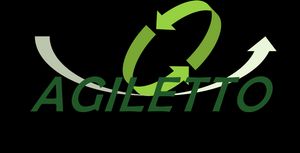Is the Scrum Master Role Obsolete?
The role of the Scrum Master is often misunderstood and undervalued in many organizations adopting Agile. Many mistakenly view the Scrum Master as merely a facilitator, applicable only in the early stages of a team's development. Some organizations split the responsibility for a person, being a half-time Scrum Master and a half-time value developer. And some organizations believe the Scrum Master role is obsolete when the team has understood how Agile works and how all ceremonies should be performed.
In this article I will show how this perspective fails to recognize the critical, evolving role that Scrum Masters play throughout the lifecycle of a team. Moreover, this perspective fails to appreciate the vastly different skill set a Scrum Master must possess compared to a developer.
So, let's do it!

The Misunderstood Role
The misconception that Scrum Masters are redundant arises from a lack of understanding of their actual responsibilities. Scrum Masters are not just meeting organizers or process enforcers; they act as servant leaders, coaches, facilitators, teachers, mentors, impediment removers, and change agents, to mention a few of the different stances any Scrum Master must be able to assume.
Different Role in Different Team Stages
Scrum Masters adapt based on the team's development stage, much like the situational leadership model proposed by Paul Hersey and Ken Blanchard. Different leadership styles are necessary throughout the various stages of team development.
Situational Leadership and Team Development
Situational leadership suggests that leaders should adjust their style based on the maturity and competence of their team. Similarly, the Scrum Master's approach must evolve as the team matures. Hersey and Blanchard's model describes four levels of development (D1-D4) and four corresponding leadership styles (S1-S4), which can also be applied to teams. This is, in my opinion, very similar to Susan Wheelan's Integrated Model of Group Development but with a twist of adding the need for different leadership styles.

D1 - Enthusiastic Beginners: Directing Leadership (S1)
Characteristics: Teams at this stage are typically eager but lack experience. Their competence is low, but their commitment is high.
Scrum Master's Role: During this phase, the Scrum Master adopts a directing role, providing clear instructions, teaching Agile practices, and closely monitoring the team's progress. The emphasis is on training and ensuring the team understands the fundamentals of Agile and Scrum.
D2 - Disillusioned Learners: Coaching Leadership (S2)
Characteristics: Teams start to encounter challenges, and their initial enthusiasm wanes. Their competence is still low to some, and their commitment is low.
Scrum Master's Role: Here, the Scrum Master transitions to a coaching role, offering more support and encouragement. They help the team navigate obstacles, foster collaboration, and maintain motivation. The focus is on building confidence and competence. Note that Hersey's concept of coaching involves support and direction, whereas, in Agile, coaching often involves challenging the team to think critically and grow. In this phase, we focus on the former. I refer to this as Supporting to distinguish it from the more challenging coaching typically found in Agile contexts.
D3 - Capable but Cautious Performers: Supporting Leadership (S3)
Characteristics: Teams become more skilled but may still lack confidence. Their competence is moderate to high, but their commitment is variable.
Scrum Master's Role: The Scrum Master adopts another approach; facilitating discussions, encouraging problem-solving, and promoting self-management. They empower the team to make decisions while remaining available to provide guidance when needed. They coach the team with powerful questions and challenge them to come up with alternative solutions and think outside the box.
D4 - Self-Reliant Achievers: Delegating Leadership (S4)
Characteristics: Teams are now highly competent and self-sufficient. In Susan Wheelan's model, they are now a high-performing team. They communicate efficiently and work as a team, think as a team, and solve problems as a team.
Scrum Master's Role: At this stage, the Scrum Master might step back, allowing the team to operate autonomously. However, the Scrum Master must challenge the team to relentlessly improve, pushing them to reach higher levels of performance and excellence, again using powerful questions and active listening. The team can survive without the Scrum Master but may not evolve and improve as effectively.
The Real Challenge: Advanced Stages
The real challenge for organizations lies in the later stages of team development (D3 and D4), where the Scrum Master's coaching abilities and servant leadership become paramount. It is in these stages that the true value of a Scrum Master is often overlooked.
Coaching and Mentorship: As teams mature, the Scrum Master shifts from directing to coaching, supporting team members develop their skills, and fostering an environment of continuous learning and improvement.
Servant Leadership: The Scrum Master supports the team by removing impediments, facilitating communication, and ensuring the team has the resources it needs to succeed. This role is crucial for maintaining high performance and enabling the team to achieve its full potential.
"Falling back"
It is important to know that a team might be D4 in one context, but in a completely new context they might fall back to becomming a D1. An example of this scenario is when the team is facing a completely new, previously unseen, challenge. Maybe a new tool like a new programming language they have never used before, or an external demand to move their solution "to the cloud". In such cases, the Scrum Master should consider adapting their leadership style to S1 or S2.
The Teal Perspective
In a Teal organization, we aim for fully self-managed teams with no traditional managers. Teams are self-organized, self-managed, and self-led. This raises the question: In such a context, is the Scrum Master role redundant?
Teal organizations, as described by Frederic Laloux in Reinventing Organizations, emphasize self-management, wholeness, and evolutionary purpose. In these environments, teams are empowered to make decisions, manage their own work, and continuously improve without hierarchical oversight.
However, even in Teal organizations, the principles embodied by the Scrum Master—coaching, servant leadership, and facilitation—remain crucial. The role may evolve, but the underlying needs do not disappear. In a fully self-managed team, the functions of a Scrum Master might be distributed among team members. The team collectively ensures that:
Impediments are removed: The team must still identify and address obstacles that hinder progress.
Continuous improvement is pursued: The team should regularly reflect on their processes and seek ways to improve.
Agile practices are upheld: The team maintains discipline in adhering to Agile principles and practices.
In this sense, while the formal title of "Scrum Master" might be less prominent, the responsibilities and practices associated with the role are still necessary for the team's success. Thus, while the formal role of a Scrum Master may be less prominent, the need for its functions persists, adapted to fit the self-managing nature of Teal organizations. And, of course, decided by the self-managed team.
Conclusion
The Scrum Master is far from obsolete. While many organizations may initially see the Scrum Master as a facilitator useful only in the early stages of team development, a role that can be assumed simultaneously as a technical role, the true complexity, and importance of the role become evident as teams advance. In the later stages, the Scrum Master's expertise in coaching and servant leadership is indispensable. Organizations that fail to recognize and leverage this dynamic role risk stagnation and missed opportunities for growth and innovation. The Scrum Master is not just a facilitator; they are a catalyst for continuous improvement, sustained team excellence, and becoming a learning organization.
Even in Teal organizations, the principles and responsibilities of a Scrum Master remain vital. The role may evolve and be distributed among team members, but the need for coaching, servant leadership, and facilitation persists.
References and Further Reading
- Wheelan, S. A. (1994). Group Processes: A Developmental Perspective. Allyn & Bacon.
- Overeem, B. (2016). The 8 Stances of a Scrum Master. Retrieved from Barry Overeem's Blog
- Hersey, P., & Blanchard, K. H. (1982). Management of Organizational Behavior: Utilizing Human Resources. Prentice Hall.
- Laloux, F. (2014). Reinventing Organizations: A Guide to Creating Organizations Inspired by the Next Stage of Human Consciousness. Nelson Parker.
- Karlsson, J. (2024). Beyond Scrum: Is it Time to Remove the Product Owner Role? Retrieved from Agiletto Blog
- Karlsson, J. (2022). Five Things You Need to Know About Teal. Retrieved from Agiletto Blog
Updates
This article was originally published 6 Aug 2024. It was updated on August 22, 2024, to correct minor errors, improve the language, and to add the section on 'Falling Back'.
Last updated May 27, 2025
